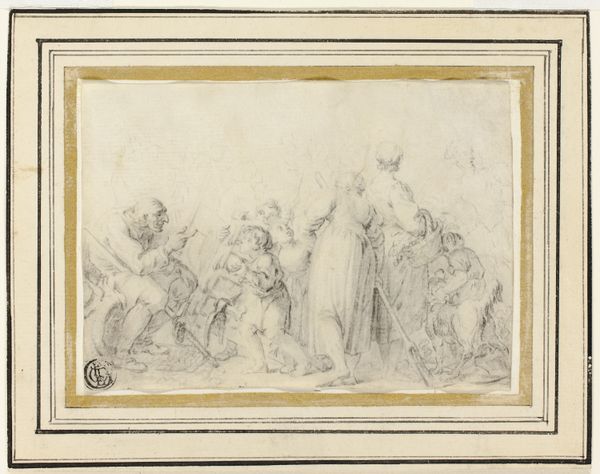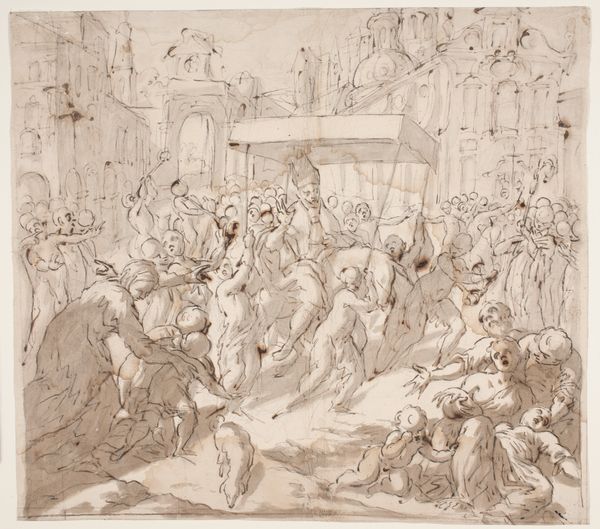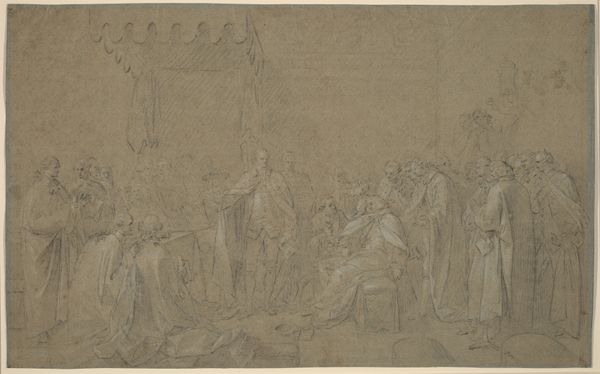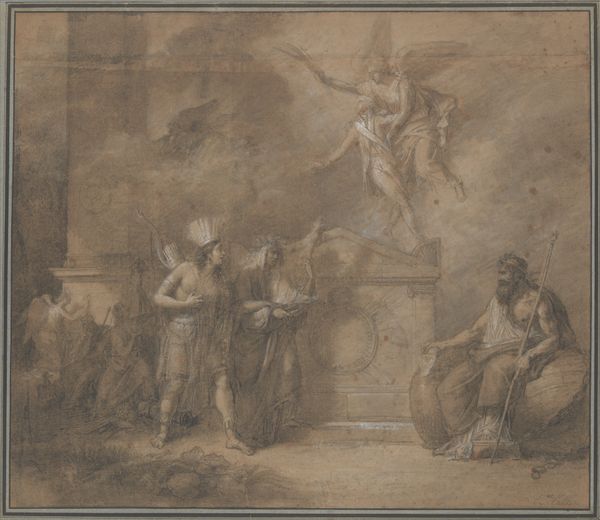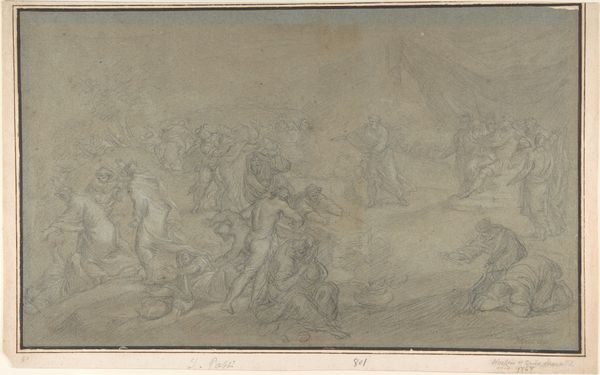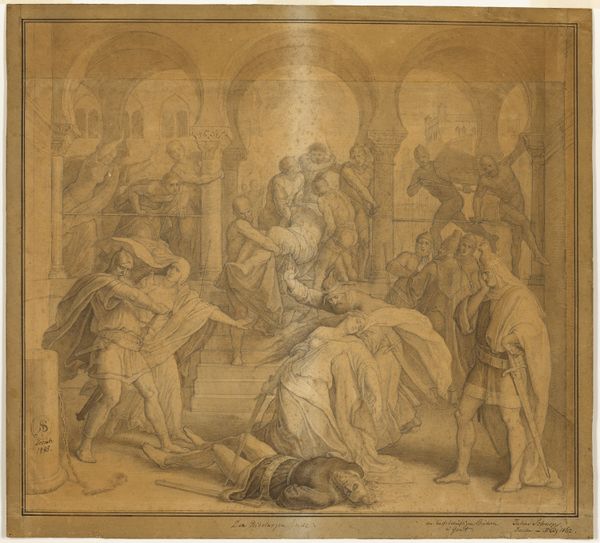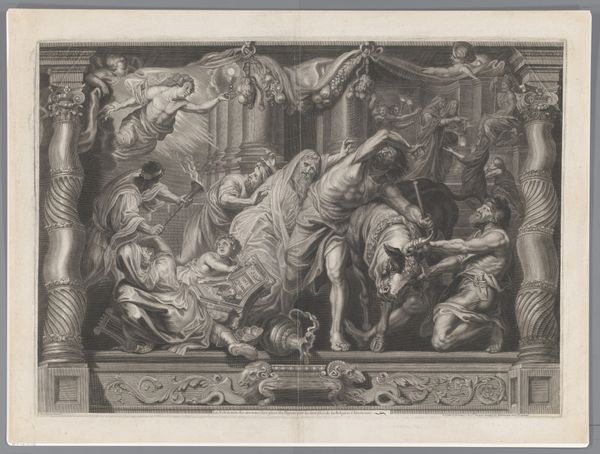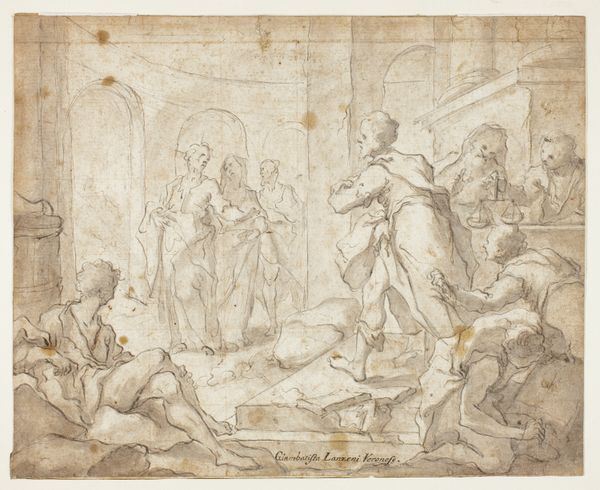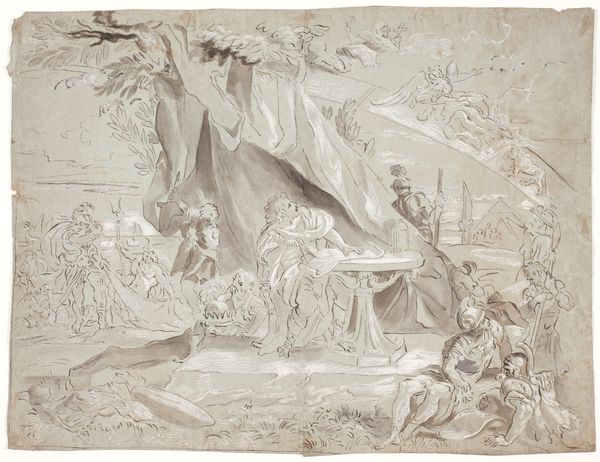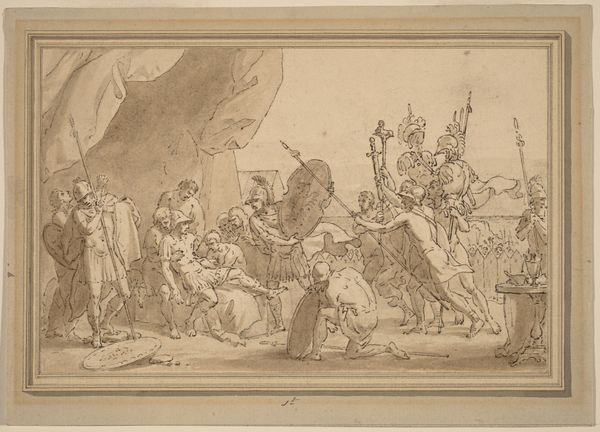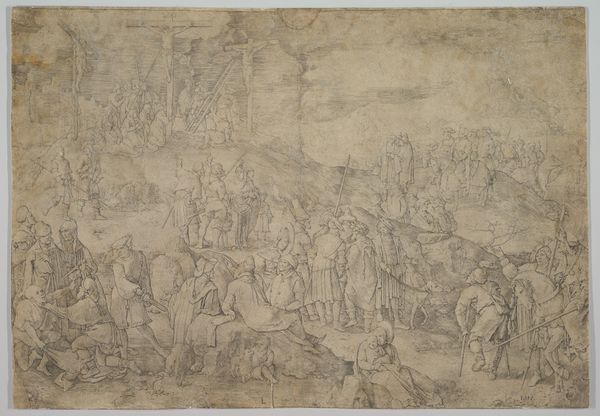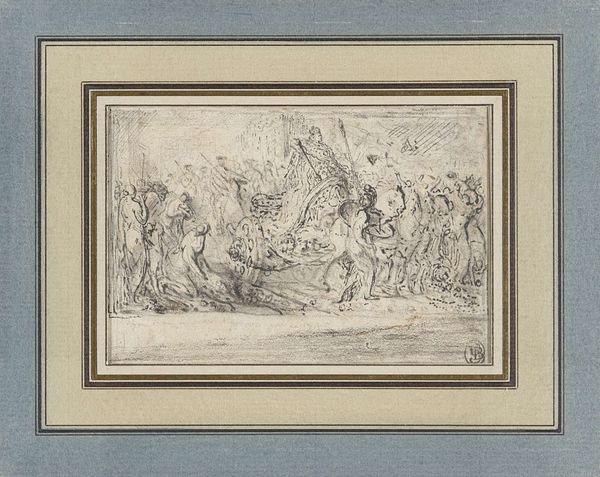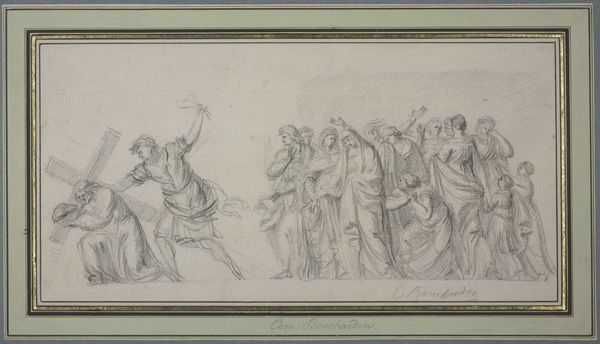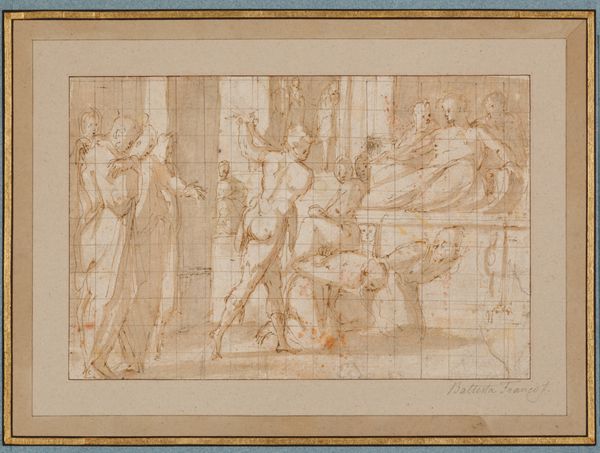
drawing, paper, ink, pen
#
drawing
#
figuration
#
paper
#
11_renaissance
#
ink
#
line
#
pen
#
history-painting
#
italian-renaissance
Dimensions: 9 1/4 x 15 3/8 in. (23.5 x 39 cm) (sheet)12 9/16 x 18 5/8 in. (31.9 x 47.3 cm) (mount)19 3/4 × 23 3/4 in. (50.17 × 60.33 cm) (outer frame)
Copyright: Public Domain
Ludovico Carracci rendered this ink drawing, "Judith Beheading Holofernes," during the late 16th or early 17th century in Bologna, Italy. At the time, Bologna was undergoing significant social and political changes as the Catholic Church sought to reaffirm its authority through the Counter-Reformation. Carracci's work reflects the period's dramatic intensity, drawing from a biblical narrative laden with gendered and political undertones. Judith, a widow, seduces and then murders the Assyrian general Holofernes to save her city from his siege. Here, we witness Judith's act of defiance, which is both brutal and heroic. Consider how the period’s patriarchal norms would have influenced the emotional resonance of this scene, where a woman takes violent action against a man in power. The drawing invites us to reflect on the intersections of gender, power, and resistance in times of conflict. In its stark depiction, it captures a moment of transformative violence that continues to challenge and provoke.
Comments
minneapolisinstituteofart almost 2 years ago
⋮
Ludovico Carracci’s exceptional gifts as a storyteller are displayed in this depiction of the Jewish heroine Judith, who saved a city besieged by the Assyrians. Sneaking behind enemy lines, she feigned loyalty to Holofernes, the Assyrian general, and he became enamored of her. After a banquet, when he was weak with drink, she beheaded him. Like David with Goliath, Judith was commonly shown triumphantly holding the victim’s severed head. Yet there was also a tradition of representing the moment before the slaying, as Ludovico has done: Holofernes, naked and struggling, and Judith, sword raised, gripping his hair to steady his head. In a novel twist, Ludovico added suspense by having Judith’s maid discovering the assassination along with the viewer. Emerging from the darkness, she pulls back the tent curtain to expose the horrific scene within. Ludovico used various compositional devices to dramatize the moment. The diagonal line of the curtain creates movement and tension, enhanced by an intersecting diagonal thrust extending across Holofernes’ muscular body to Judith’s arms. The shimmering wash, which casts half the scene in darkness, adds mystery and excitement.
Join the conversation
Join millions of artists and users on Artera today and experience the ultimate creative platform.
